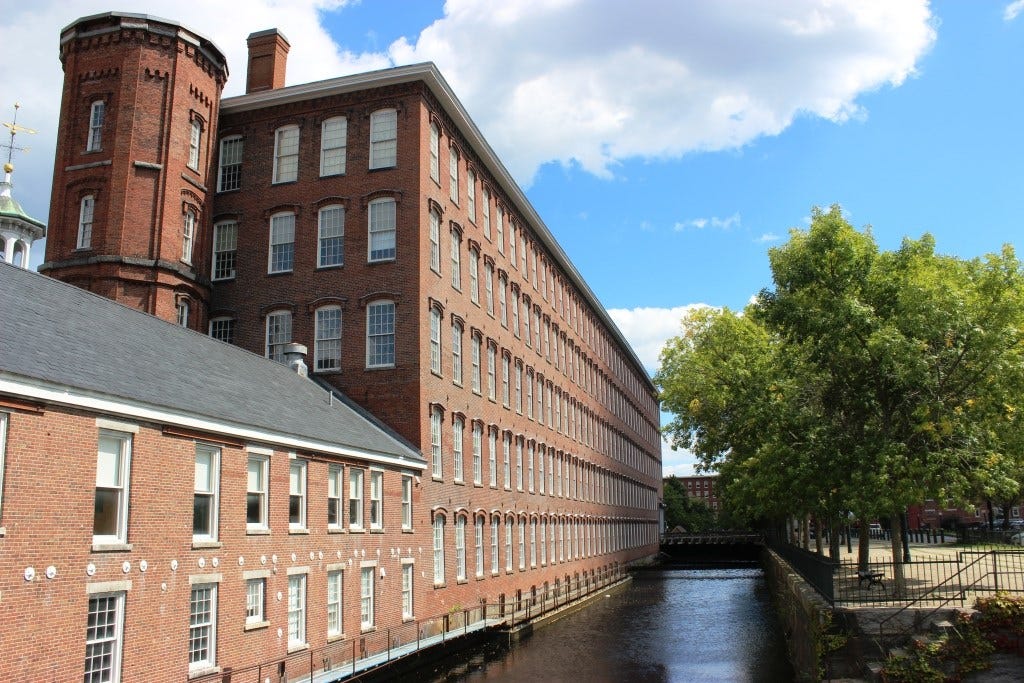In defense of nontraditional national parks
The Lowell National Historical Park is one of the nation’s least typical or natural parks. Does it deserve its place in the Park Service?

In 1979, I was part of a high school debating team assigned to argue the affirmative for “Should Massachusetts legalize casino gambling within the city limits of Lowell?” The way to win the debate, we decided, was to ask the people affected. One Sunday morning we all piled into an old beater car blaring Tom Petty’s “American Girl” and drove to a Lowell mall. We asked our survey questions and happily tallied favorable results.
Our survey was a big hit until our debate opponents pointed out that it was not scientific, that our respondents might be biased or uneducated, that we had not hired an accredited firm and could have made the whole thing up for all they knew, and that the voters of Lowell should have no more influence on a statewide election than any other voters—such as, for example, the incredibly smart and good-looking judges of this very debate.
We lost the debate; Lowell lost the election. But I learned a lot! One lesson: for being in such proximity to greater Boston’s wealth, Lowell was unbelievably poor. Miserable. Desperate. And stuck in a self-reinforcing cycle of disinvestment.
Forty-two years later, I went back to Lowell, and was blown away. There was still poverty, but alongside it—indeed, integrated into it—was something extraordinary: a national park.
In the 1820s, Lowell’s water-powered textile mills were among the first in the nation. The mills’ employees, including immigrant families and early female factory workers, were at the forefront of lifestyles and conflicts that would dominate the coming century. And many of those old buildings still stand.
I was particularly fascinated because the national park and downtown Lowell were jumbled together. The park was Lowell and Lowell was the park. I walked from one park building to another past bodegas, barbershops, and military recruiters. When I stopped for lunch, I had a choice of good, cheap Dominican, Lao, or Hawaiian food—three options unavailable in the entire state of Montana.
On an October Tuesday, there were no outdoor programs. The Merrimack River had been important to Lowell as a source of power, but the park didn’t much celebrate nature. It celebrated textile manufacturing, innovative architecture, industrial might, and the lives of laborers. It was not what the Trump administration—in announcing a preference for huge budget cuts earlier this month—would call a ‘National Park,’ in the traditionally understood sense.
When Lowell lost out on casinos, its backup plan was national park. That seemed crazy at the time. But it didn’t require a statewide referendum. The people of Lowell were for it. Paul Tsongas, a well-liked US Senator from Lowell, was for it. And after some lobbying, the Park Service realized that its mission was not necessarily wilderness-based. It was a place-based.
Lowell was a fascinating place. And the Park Service was really good at interpreting place-based history. Furthermore, while some might criticize the agency’s love of wilderness as elitist, a celebration of blue-collar work gave it great lower-class cred.
By the time I got to Lowell, decades of Park Service investments had prompted private sector investments. Luxury condos filled many of the historic buildings, and even some new ones being constructed. This gentrification sat next to bums and beggars and other markers of continued misery. I made the mistake of walking from my Park Service parking space to a nearby packie (liquor store) to buy some beer for my friends’ party later that evening; let’s just say I’ll take a grizzly bear any day.
I’m no expert on Lowell. I spent a day in the park and loved it; I bought some books that I haven’t yet gotten around to reading. So I don’t know if Lowell is a “success.” In particular, one could argue that Lowell is a museum rather than a park, and museums are typically run by nonprofits rather than federal agencies.
But that rule has plenty of exceptions, and so this experiment struck me as worthy. Without the Park Service’s investments, how many taxpayer dollars would have been spent on fruitless economic development schemes, or additional welfare payments, or rural infrastructure for suburban developments that the condo-buyers would have otherwise fled to? (As Matthew Yglesias says, the best place to plant a new city is inside an existing distressed one.)
Furthermore, it sure seemed like park visitors, as well as employees and neighbors, appreciated this new direction for the Park Service. A national park—for that matter, nature itself, and history itself—didn’t have to be located in some remote Western wilderness area. Parks, nature, and history could all be here in a once-miserable place, could indeed be its path to redemption.
Discussion:
This has turned out to be a trilogy: in part 1 I looked at the historically expanding mission of the National Park Service. In part 2 I investigated moments when the mission didn’t expand. Here in part 3, a deep dive on an expansion that strikes me as successful. My previous trilogy was planned in advance, but this one emerged organically. Next week we’ll have a new topic.
“American Girl”: It felt like a triumph.




Interesting read. Correction, though. Hawaiian food is available in Montana. Several Montana pizza joints will put pineapple on your pie.
Lowell, Lawrence, Haverill, the Merrimack River and walk up tenements where one of my grandmothers lived while working in the Lawrence textile mills. Another grandmother lived her whole life in Lowell. Great history preservation as noted in your article.